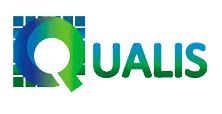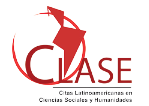Uso de la clasificación decimal universal para la recuperación de información en entornos digitales: una revisión sistemática de la literatura
DOI:
https://doi.org/10.5433/1981-8920.2021v26n1p550Palabras clave:
Organización y representación del conocimiento, Sistemas de clasificación bibliográfica, Clasificación decimal universal, Recuperación de información en la webResumen
Introducción: los sistemas de organización del conocimiento, incluso los tradicionales, como la Clasificación Decimal Universal, se han estudiado para mejorar la recuperación de información en línea, aunque el potencial del uso de estructuras de conocimiento en la interfaz de usuario aún no se ha difundido.Objetivo: Este estudio presenta un mapeo de la producción científica sobre metodologías de recuperación de información, que hacen uso de la Clasificación Decimal Universal.
Metodología: Revisión sistemática de la literatura, realizada en dos etapas, con una selección de 44 publicaciones, resultando en el intervalo de tiempo desde 1964 hasta 2017, cuyas categorías analizadas fueron: autores más productivos, idiomas de publicaciones, tipos de documentos, año de publicación, trabajo más citado, revista de impacto principal y categorías temáticas cubiertas en las publicaciones.
Resultados: se encontraron un total de nueve autores y coautores más productivos; predominio del idioma inglés (42 publicaciones); trabajos publicados en formato de artículos de revistas (33); y destacar hasta el año 2007 (ocho publicaciones). Además, se identificó que el trabajo más citado fue de Mcilwaine (1997), con 61 citas, y la revista Extensions & Corrections to the UDC fue la que tuvo el mayor número de publicaciones, además de la incidencia del tema Universal Automation vinculado a un tesauro para la recuperación de información, presente en 19 obras.
Conclusiones: escasez de estudios que exploren el potencial de la Clasificación Decimal, especialmente en la literatura brasileña, lo que resalta la necesidad de realizar más estudios sobre el tema, que involucren investigaciones a nivel nacional e internacional.
Descargas
Citas
BALÍKOVÁ, M. The role of UDC classification in the Czech Subject Authority File Item type Meetings and Proceedings at a Crossroads: Multiple Directions to Usability The role of UDC classification in the Czech Subject Authority File. Extensions & Corrections to the UDC, v. 1, 2009.
BROUGHTON, V. Concepts and terms in the faceted classification: the case of UDC. Knowledge organization, v. 37, n. 4, p. 270-279, 2010.
BROUGHTON, V.; SLAVIC, A. Building a faceted classification for the humanities: principles and procedures. Journal of Documentation, London, v. 63, n. 5, p. 727-754, 2007.
BUXTON, A. B. Computer searching of UDC numbers. Journal of Documentation, London, v. 46, n. 3, p. 193-217, 1990.
CHAN, L. M.; ZENG, M. L. Ensuring interoperability among subject vocabularies and knowledge organization schemes: a methodological analysis. IFLA journal, v. 28, n. 5-6, p. 323-327, 2002.
CHUDAMANI, K. S. Classification Model for Libraries in the Digital Environment. In: INTERNATIONAL CALIBER, 2., 2004, Índia. Anais […]. India: New Delhi, 2004.
COLILLAS, M. G. Tratamiento de los Metadatos de Contenido en la Web Semántica o cuando la Lógica se hace Evidente. In: NUEVAS PERSPECTIVAS PARA LA DIFUSIÓN Y ORGANIZACIÓN DEL CONOCIMIENTO, 1., 2009, Barcelona. Anais […]. Barcelona: ISKO, 2009.
COLILLAS, M. G. UDC on the internet: Theory and project in evolution for use of indexing and retrieval systems. IFLA Journal, v. 37, n. 4, p. 305-313, 2011.
COLILLAS, M. G.; NICOLAU, A. Aplicación de un nuevo sistema de indización en una colección de recursos especializados en ciencias de la educación. El profesional de la información, Barcelona, v. 16, n. 6, p. 627-635, 2007.
COLILLAS, M. G.; NICOLAU, A. Improving subject searching in databases through a combination of descriptors and UDC. Zadar: Bobcatsss, Barcelona, v. 1, n. 8, p. 1-29, 2008.
DAHLBERG, I. Possibilities for a new universal decimal Classification. Journal of Documentation, London, v. 27, n. 1, p. 18-36, 1971.
DAHLBERG, I. The Information Coding Classification (ICC): A modern, theory-based fully-faceted, universal system of knowledge fields. Axiomathes, v. 18, n. 2, p. 161-176, 2008.
DOORN, M. V.; POLMAN, K. At a Crossroads: Multiple Directions to Usability From classification to thesaurus … and back? Subject indexing tools at the library of the Afrika-Studiecentrum Leiden [extended abstract]. Knowledge Organization, v. 37, n. 3, p. 203-208, 2010.
FIAŁKOWSKI, K. R.; MURASZKIEWICZ, M. R.; TOŁWIŃSKA, A. B. Methodology of world clearinghouse activity. Information Processing & Management, v. 17, n. 1, p. 21-25, 1981.
FOSKETT, D. J. A Study of the Role of Categories in a Thesaurus for Educational Documentation. Strasburg: Council of Europe, 1973.
FRÂNCU, V. Does convenience trump accuracy? The avatars of the UDC in Romania. Extensions and Corrections to the UDC, v. 29, n. 1, p. 263-272, 2007.
FRÂNCU, V. Multilingual access to information using an intermediate language. 2003. 203f. Tese (Doutorado) - Universiteit Antwerpen, Antwerpen, 2003a.
FRÂNCU, V. The impact of specificity on the retrieval power of a UDC-based multilingual thesaurus. Cataloging & classification, v. 37, n. 1-2, p. 49-64, 2003b.
FRÂNCU, V.; SABO, C. Implementation of a UDC-Based Multilingual Thesaurus in a Library Catalogue: The Case of BiblioPhil. Knowledge Organization, v. 37, n. 3, p. 209-215, 2010.
FREEMAN, R. R. Computers and Classification Systems. Journal of Documentation, London, v. 20, n. 3, p. 137-145, 1964.
GNOLI, C. Progress in synthetic classification: towards unique definition of concepts Item type Conference Paper. Extensions and corrections to the UDC, Haia, v. 29, n. 1, p. 4-5, 2007.
HAJDU-BARÁT, Á. Integration of a thesaurus and Universal Decimal Classification (UDC) to improve subject access: the Hungarian experience. Extensions & Corrections to the UDC, v. 31, p. 197-207, 2009.
HIGGINS, J. P. T.; GREEN, S. Cochrane Handbook of Systematic Reviews of Intervention Version 5.1.0. London: The Cochrane Collaboration, 2011.
HINDSOTI, R. Reflections on the utilization of the Universal Decimal Classification. Aslib Proceedings, v. 31, n. 6, p. 305-311, 1979.
HJØRLAND, B. Arguments for ‘The Bibliographical Paradigm’: Some Thoughts Inspired by the New English Edition of the UDC. In: INFORMATION RESEARCH, 12., 2007. [S.l.]: [S.n.], 2007.
HODGE, G. Systems of knowledge organization for digital libraries: beyond traditional authorities files. Washington: Council on Library and Information Resources, 2000.
INTERNATIONAL ORGANIZATION FOR STANDARDIZATION (ISO) 25964-1. Information and documentation Thesauri and interoperability with other vocabularies: Part 1: Thesauri for information retrieval. Genebra: ISO, 2011.
INTERNATIONAL ORGANIZATION FOR STANDARDIZATION (ISO) 25964-2. Thesauri and interoperability with other vocabularies: Part 2: Interoperability with other vocabularies. Genebra: ISO, 2013.
KAOSAR, A. Merit & Demerit of using Universal Decimal Classification on the Internet. 2008. Dissertação (Mestrado em Ciência da Informação) - Royal School of Library and information Science, Universidade de Copenhagen, Denmark, 2008.
LA BARRE, K. The heritage of early FC in document reference retrieval systems, 1920-1969. Library History, Champaign, v. 23, n. 2, p. 129-149, 2007.
LEE, D. Numbers, instruments and hands: the impact of faceted analytical theory on classifying music ensembles. Knowledge Organization, v. 44, n. 6, p. 405-415, 2017.
MCILWAINE, I. C. Classification at a Crossroads: Multiple Directions to Usability. International Cataloguing and Bibliographic Control: Quarterly Bulletin of the IFLA UBCIM Programme, v. 39, n. 2, p. 41-42, 2010.
MCILWAINE, I. C. The Universal Decimal Classification: Some Factors Concerning Its Origins, Development, and Influence. Journal of the American Society for Information Science, London, v. 48, n. 4, p. 331-339, 1997.
MILLS, J. Progress in Documentation: Library Classification. Journal of documentation, Califórnia, v. 26, n. 2, p. 120-160, 1970.
MONTEIRO, S. D. et al. Sistemas de recuperação da informação e o conceito de relevância nos mecanismos de busca: semântica e significação. Encontros Bibli: revista eletrônica de biblioteconomia e ciência da informação, v. 22, n. 50, p. 161-175, 2017.
PIKA, J. Universal Decimal Classification at the ETH-Bibliothek Zürich-a Swiss perspective. UDC Consortium, London, v. 29, n. 1, p. 229-251, 2007.
POLLITT, A. S. The key role of classification and indexing in view-based searching. Technical report - University of Huddersfield, [Huddersfield], 1998.
SCHALLIER, W. "What a subject search interface can do". Extensions & Corrections to the UDC, Bélgica, v. 26, n. 1, p.18-28, 2004.
SEGUNDO, R. S. Crossroads: Multiple Directions to Usability Using MARC classification format for UDC and mappings to other KO systems for an enriched authority file. Extensions & Corrections to the UDC, v. 31, n. 1, p. 285-291, 2009.
SIMÕES, M. G. A representação de Etnia e a sua evolução na Classificação Decimal Universal. 2010. 600f. Tese (Doutorado em Biblioteconomia e Documentação) - Universidad de Salamanca, Salamanca, 2010.
SLAVIC, A. Classification management and use in a networked environment: the case of the Universal Decimal Classification. 2005. 463f. Tese (Doutorado em Filosofia) - University of London, London, 2005.
SLAVIC, A. Faceted classification: management and use. Axiomathes, v. 18, n. 2, p. 257, 2008.
SLAVIC, A. Interface to classification: some objectives and options Item type Preprint Interface to Classification: Some Objectives and Options. Extensions and Corrections to the UDC, Haia, v. 28, 2006a.
SLAVIC, A. The level of exploitation of Universal Decimal Classification in library OPACs: A pilot Study. Vjesnik bibliotekara Hrvatske, v. 49, n. 3-4, p. 155-182, 2006b.
SLAVIC, A. UDC implementation: from library shelves to a structured indexing language. International cataloguing and bibliographic control, London, v. 1, 2004.
SLAVIC, A. UDC in subject gateways: experiment or opportunity? Knowledge Organization, v. 2, n. 33, p. 67- 85, 2006c.
SLAVIC, A.; DAVIES, S. Facet Analysis in UDC: Questions of Structure, Functionality and Data Formality. Knowledge Organization, v. 44, n. 6, p. 425-435, 2017.
SLAVIC, A.; CORDEIRO, M. I.; RIESTHUIS, G. Enhancement of UDC data for use and sharing in a networked environment Paper presented at the Librarian Workshop in conjunction with. In: ANNUAL CONFERENCE OF THE GERMAN CLASSIFICATION SOCIETY ON DATA ANALYSIS, 31., 2007, Alemanha. Anais [...]. Alemanha: Freiburg i. Br, 2007.
SLAVIC, A.; CORDEIRO, M. I.; RIESTHUIS, G. Maintenance of the Universal Decimal Classification: overview of the past and preparations for the future. International Cataloguing and Bibliographic Control Journal International Cataloguing and Bibliographic Control, London, v. 37, n. 2, p. 23-29, 2008.
TRISTÃO, A. M. D. et al. Sistema de classificação facetada e tesauros: instrumentos para organização do conhecimento. Ciência da informação, v. 33, n. 2, p. 161-171, 2004.
VICKERY, B. C. Classificatory principles in intelligent interfaces. Tools for knowledge organization and the human interface. In: PROCEEDINGS OF THE INTERNATIONAL ISKO CONFERENCE, 1., 1990, Darmstadt, Anais […]. Darmstadt: [S.n.], 1990. p. 14-20.
VUKADIN, A.; SLAVIC, A. Challenges of Facet analysis and Concept Placement in Universal Classifications: the Example of Architecture in UDC. Knowledge Organization, v. 1, p. 236-243, 2014.
WALL, R. A. Indexing language structure for automated retrieval. Information Storage and Retrieval, v. 9, n. 11, p. 607-617, 1973.
WALL, R. A. Intelligent indexing and retrieval: A man-machine partnership. Information Processing and Management, Loughborough, v. 16, n. 1, p. 33-90, 1980.
Descargas
Publicado
Cómo citar
Número
Sección
Licencia
A revista se reserva o direito de efetuar, nos originais, alterações de ordem normativa, ortográfica e gramatical, com vistas a manter o padrão culto da língua e a credibilidade do veículo. Respeitará, no entanto, o estilo de escrever dos autores. Alterações, correções ou sugestões de ordem conceitual serão encaminhadas aos autores, quando necessário.
O conteúdo dos textos e a citação e uso de imagens submetidas são de inteira responsabilidade dos autores.
Em todas as citações posteriores, deverá ser consignada a fonte original de publicação, no caso a Informação & Informação.
















